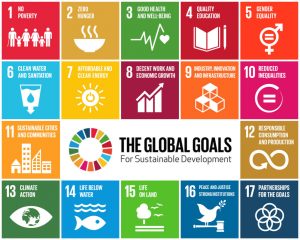In September 2015, the United Nations General Assembly came together to support the creation of the 2030 Sustainable Development Goals (SDGs). The main agenda of these goals aims to end global poverty and hunger, preserve the environment, support equal opportunities, quality education, and promote peace, justice and understanding by 2030.
However, in many societies and communities, there are numerous issues that prevent a girl from fulfilling her right to an education. These issues range from her gender to her economic condition to her cultural beliefs. There are stigmas attached to the education of women and girls, and as a result, untapped human potential and gender inequality are prominent. Even sex trafficking, child marriage and forced prostitution can become the sad alternatives to an education. This way of thinking only leaves the country in a complex web of economic paralysis, poverty, poor health, and gender-based violence.
For many girls and young women around the world, going to school is merely a wish. It is fundamental for us to understand the importance of education for girls, and what gender equality holds for the lives of females, their country and the world.

The Sustainable Development Goals are said to be interconnected – often the key to success for one SDG will involve tackling issues associated with another. Educating girls and promoting gender equality can be the key to achieve all the SDGs.
The Sustainable Development Goals are listed below:
- End poverty and all its forms everywhere
- End hunger, achieve food security and improved nutrition and promote sustainable agriculture
- Ensure healthy lives and promote well-being for all at all ages
- Ensure inclusive and equitable quality education and promote lifelong learning opportunities for all
- Achieve gender equality and empower all women and girls everywhere
- Ensure availability and sustainable management of water and sanitation for all
- Ensure access to affordable, reliable, sustainable, and modern energy for all
- Promote inclusive and sustainable economic growth, and productive employment and decent work for all
- Build resilient infrastructure, promote inclusive and sustainable industrialization and promote innovation
- Reduce inequality within and among countries

- Make cities and human settlements inclusive, safe, resilient and sustainable
- Ensure sustainable consumption and production patterns
- Take urgent action to combat climate change and its impacts
- Conserve and sustainably use the oceans, seas and marine resources for sustainable development
- Protect, restore and promote sustainable use of terrestrial ecosystems, sustainably manage forests, combat desertification, and halt and reverse land degradation and stop biodiversity loss
- Promote peaceful and inclusive societies for sustainable development, provide access to justice for all and build effective, accountable and inclusive institutions at all levels
- Strengthen the means of implementation and revitalize the global partnership for sustainable development
Here are some examples of how educating girls can allow all SDGs to be achieved.
Educating girls leads to: Improved Health and Well Being (SDG 3)
Fewer Child Deaths: According to studies by UNESCO, if all women had a primary education, there would be 15% fewer child deaths. If all women had a secondary education, child deaths would be cut in half, saving almost 3 million lives across the globe.
Fewer Maternal Deaths: If all mothers completed a primary education, maternal deaths would decrease by 60%, saving approximately 98,000 lives. In sub-Saharan Africa, if all women completed just a primary education, maternal deaths would be reduced by 70%, saving 50,000 lives.
Improved Nutrition: A mother with an education improves child nutrition. If all women had a primary education, 1.7 million children would be saved from malnutrition, followed by 12 million if the mother obtained a secondary education.
Decrease in Infectious Diseases: Women and girls with at least 6 years of school are more likely to protect themselves against HIV/AIDS and other diseases.
Educating girls leads to: Gender Equality, Work and Economic Growth, Sustainable Cities, Industry and Innovation and Reduced Inequalities (SDGs 5, 8, 9, 10 and 11)
As a country’s inhabitants become better educated, they are more likely to make cities and settlements safer, sustainable, and resilient.
Increase in Equality (SDG 5, SDG 10): Gender inequality is demonstrated in many forms, including income disparities, wage discrimination, sexual suppression, gender roles and gender violence. By advancing girls’ education, girls will be given the right to realize their human potential, exercise their human rights and contribute to society by benefiting economic, social and political development, thus reducing gender inequality. Educated girls will be able to form the next generation of women leaders, and make revolutionary advances toward bridging the gender gap.
Catalyst to Economic Growth and Sustainable Communities (SDG 8, SDG 11): According to the World Bank’s study on 100 countries, every 1% increase in women with a secondary education yields an increase of 0.3 percentages points in the country’s annual per capita income growth rate. For example, if India had a 1% increase of girls in secondary school, their GDP would increase by $5.5 billion. Additionally, women with an education are more likely to work, create economic growth and advance their communities.
Related article: Afghan Women’s Group in New York Reaches Out for Women’s Rights|
Advancement of Innovation and Industry (SDG 9): Girls are at a disadvantage when compared to boys; they have fewer opportunities and lower rates of entrepreneurship and innovation in many countries. Educating girls can create an environment that encourages innovation, entrepreneurship and creativity. This requires innovation-specific skills to help connect women and girls with ideas. Furthermore, educating girls in STEM (Science, Technology, Engineering and Math) subjects also increases sustainable industries, and investing in scientific research and innovation helps to facilitate sustainable development.
Educating girls leads to: Poverty Alleviation and Zero Hunger (SDG 1 and SDG 2)
Decrease in Poverty and Hunger (SDG 1, SDG 2): According to the World Bank, for every extra year of primary education, a girl’s individual wage rate increases an average of 10-20% and 25% with an extra year of secondary school. Furthermore, according to the United Nations, 90% of a mother’s wage goes towards caring for her family, thus lifting a household out of poverty and hunger. Additionally, a mother’s education improves her children’s nutrition, leading to 4 million child deaths prevented. (Photo Credit: UN Photo/ Eskinder Debebe)
Educating girls leads to: Climate Action, Clean Water and Sanitation, Clean and Affordable Energy, Responsible Consumption and Production, Improving Life Below Water and Improving Life on Land (SDGs 13, 6, 7, 12, 14, 15)
Educated citizens are more inclined to build and maintain clean energy infrastructures, show greater concern about the well-being of the environment, use water more efficiently and recycle.
Ability to Combat Climate Change (SDG 13): Women and girls are among the most vulnerable to climate change. They are also the most powerful agents of change. Studies by UNICEF have found that many children, especially girls, can be extraordinarily resilient in the face of significant challenges. Providing girls with relevant education on disasters in a school environment can lower their risks while contributing to sustainable development in their communities.
Increase in Responsible Consumption (SDG 12): When girls can access information about how to adapt to a changing climate, they can in turn be responsible with consumption. They can also contribute to the resilience of their families and communities. In fact, UNICEF believes that educating girls and women is one of the best ways of strengthening communities on climate change. Furthermore, as girls increase their prospects through education, they can supply the family economically. By doing so, they could help make families more resilient to climate change.
Awareness in the Well-Being of the Environment (on Land and Below Water) and Rise of Innovation (SDG 14, 15 and SDG 7): By increasing girls in STEM subjects, girls and women would be more educated in subjects related to the environment such as marine biodiversity, life below water or life on land. Educated girls are also more likely to be innovative and advance new ideas such as reliable modern energy services.
Better Hygiene and Sanitation (SDG 6): Furthermore, educated girls are more likely to learn about hygiene and improved water sanitation through schools or other programs.

Educating girls leads to: Strong Institutions, Peace and Justice (SDG 16)
Increased Involvement in Democratic Processes and Awareness of Rights: According to the UNDP, women and girls who receive an education are more likely to seek justice and tackle prejudices such as gender violence, domestic violence or other injustices as they are more aware of their rights. We also know that literate people are more likely to participate in the democratic process and are aware of their civil rights.
Rise in Peace and Tolerance: Additionally, studies by the United Nations have shown that those who receive a secondary education are more likely to show tolerance than those with a primary education for people who speak another language, immigrants, homosexuals, people of a different religion, and people of a different race. Furthermore, If the enrollment rate for secondary school is increased by 10%, the risk of war is decreased by 3%.
Educating girls leads to: Partnerships for Sustainable Development (SDG 17)
Formation of Partnerships and Healthy Societies: Education in general coordinates the work of all actors who play a role in a task. When players work together, we see greater productivity and impacts with the available resources. And we see real progress in countries that are driven to bring quality education to their children and move closer to the goal of sustainable international development.
All seventeen goals are met thanks to girls’ education. However, plenty of work needs to be done.
We need to raise awareness of the importance of girls’ education all over the world – and urgently. As of 2015, 62 million girls are denied access to school. What I have shown above are just a few examples of how the education of girls and women can allow us to achieve international sustainable development by meeting the targets of the SDGs. Without allowing girls and women to achieve their human potential we are only taking steps back.
I believe that with cooperation and partnerships across the world and between organizations, we can achieve gender equality and quality education for girls, and in turn, achieve all of the sustainable development goals.
Do you want to get involved with the sustainable development goals? You can start by letting people know about them. The United Nations has also put together a list of actions that you can take everyday, everywhere to contribute to a sustainable future. It can be found here.
Do you want to get involved with empowering girls and investing in girl’s education? Check out these great organizations and help empower girls and break down barriers to girls’ education all around the world.


![Visit of Primary School with H.E. Ms. Nouria Benghabrit-Remaoun, Minister of National Education of Algeria
[Primary School “Mazouzi Mohamed”]](https://impakter.com/wp-content/uploads/2017/02/666401.jpg)








